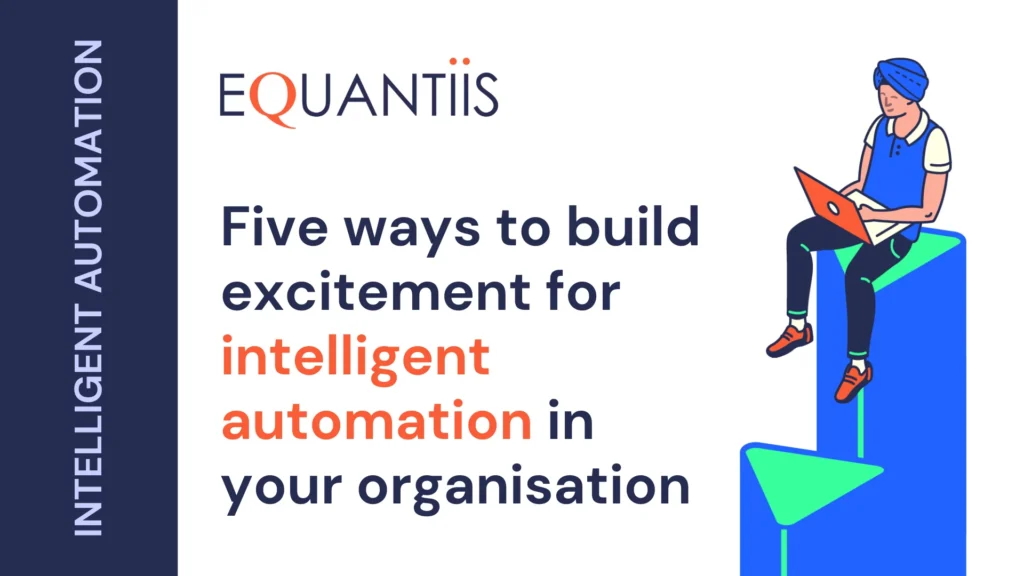Be clear on what you want to achieve with this
This type of project has to have a clear purpose, it needs to be well defined and more importantly you need to be able to link it back into an overall business strategy goal – otherwise why do it?
To do this, you need an Exec Sponsor to bring the business together. Once an Exec Sponsor has been secured, they then need to form a project team of representatives from the business.
Together, outline what can be achieved, why this is a positive thing and agree some principles the team buy into to avoid conflict, subjective opinions and start the foundation of building out your strategy.
Customer Experience
Many organisations will be looking at these projects to see how they can save money and drive efficiency for staff to carry out value add roles, that’s great but it misses the key point of this – improve your customer experience.
At a recent Digital Leader Summit in London attend by 160 business leaders from different sectors, only a shocking 12% had ever carried out a customer experience journey.
Let’s be clear, no change should be happening without doing this first and understanding the root cause of the challenges within the organisation where RPA can be there to assist. This is also key for your benefits realisation which is outlined below in point 6.
Do not let the IT department define your RPA strategy alone
Your technical department will add huge value to this change, but it needs business input for it to be successful. Let the IT department be involved but let’s be clear this is a business change and there is no such thing as an IT project!
Hearts and minds
Now with anything that is going to be changed within your organisation, the first part of the strategy should be your Hearts and Minds. This is without doubt the easiest piece to get right but always the bit that gets missed.
Many people will be worried about bots coming to take their jobs, this should not be the case. But put yourself in their shoes, if you don’t communicate properly with them people will naturally jump to conclusions.
Take time to get them involved, listen to the concerns, coach them and make sure they really understand what is happening and why.
Get your business processes in order
Don’t be a statistic and end up being involved in a project that goes over budget, delivers no value and that somebody will lose their job over.
Before you get seduced by the technology vendors on what can be achieved, understand what you want from it first.
To do that you need to do 3 simple things:
Business process discovery – outline all your business processes (not map) including their owner, input, output and outcomes they deliver
Fix the immediate issues – RPA will not fix your business processes if the processes are broken in the first place. Once you have completed your process discovery, a simple analysis can be undertaken to understand where changes are required to business process before you automate them
Process validation – not all processes are suitable for RPA. Work on the ones that are going to deliver the best efficiency, customer experience and value to the organisation. Unless you prioritise, you will end up trying to fix everything which is unachievable.
Benefits realisation
At some point in the future, somebody will question why this project was undertaken and what this has delivered back to the business.
Benefits realisation is critical to your success. Make sure you document the problem you have, the impact on the business and how this project will resolve this.
It needs to be quantifiable with something tangible. Using your customer experience mapping as well as the efficiency are good places to start.
Go back 3, 6 and 12 months after go live and retake the measurements to ensure it is delivering the desired effects, if not, adopt and improve – this project will never be complete.
Understand the skill and resource gap
Not all organisations have the luxury of skills and resources to undertake what is required for this type of project. Again, not just from a technical perspective but also business capabilities.
Ask yourself candidly, do you have the skills to map out processes effectively? Are you equipped enough to challenge the ways you are currently working? DO you have enough resources to do this even if you did have the skills?
If not, work out the resource plan and build this into your cost model.
Compare the market
Once you have done the internal work, then you are ready to engage with the market. It is imperative to do it this way round so you don’t get seduced on the features and benefits of the technology but turn the tables and make sure you are clear on the outcome you are trying to achieve and allow the tech to demonstrate how they can support you in achieving this.
You should have enough information now to get an understanding of the costs, timescales, risks and assumptions that gives you sufficient confidence.
Build the business case
There are many things that can be added to your business case but the above gives you a starting block to allow you to make an informed decision.
Make sure the vendor you select signs up to your business case. “Skin in the game” should be used to ensure they deliver what the business case said it would.
Take your time
You have your business case approved, budgets and resources released – but don’t rush. There is a lot of learning to take place along the way.
Start with a proof of concept with a select few processes and outcomes, make sure you run the required governance to deliver this and then undertake a lesson learnt exercise before going out to the rest of the business.
RPA isn’t going anywhere, anytime soon. If used correctly, RPA coupled with Artificial Intelligence and Machine Learning will add considerable operational efficiency to your organisation but ultimately deliver an unrivalled customer experience your peers will aspire to.







